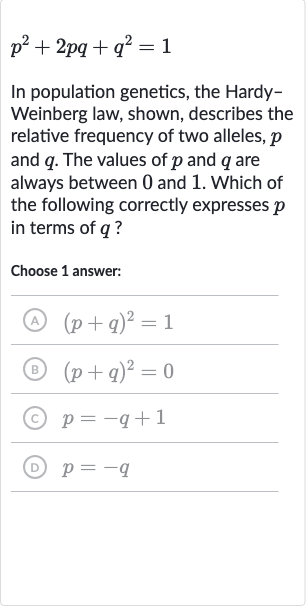Full solution
Q. In population genetics, the HardyWeinberg law, shown, describes the relative frequency of two alleles, and . The values of and are always between and . Which of the following correctly expresses in terms of ?Choose answer:(A) (B) (C) (D)
- Equation Verification: The Hardy-Weinberg law equation is given by . This equation resembles the expansion of . Let's verify if this is the case.
- Expansion Comparison: We know that expands to . This matches the given Hardy-Weinberg law equation. Therefore, we can write the equation as .
- Square Root Calculation: Since the values of and are always between and , we can take the square root of both sides of the equation to solve for . The square root of is , and since and are non-negative, we do not need to consider the negative square root. So, we have .
- Expressing in terms of : Now, we can express in terms of by rearranging the equation to solve for . Subtracting from both sides gives us .
More problems from Compare linear and exponential growth
QuestionGet tutor help
QuestionGet tutor help
QuestionGet tutor help
QuestionGet tutor help
QuestionGet tutor help
QuestionGet tutor help
QuestionGet tutor help

